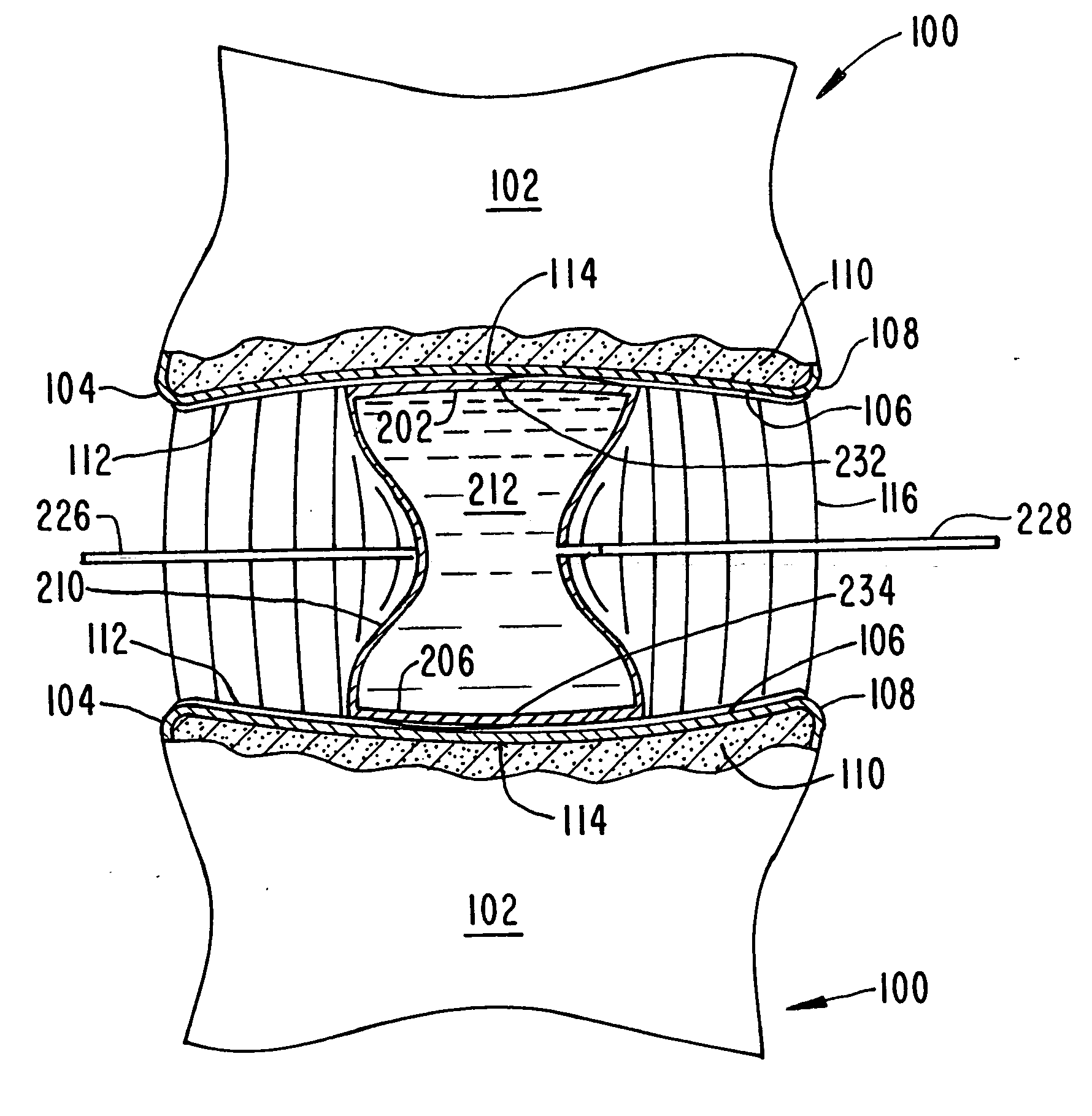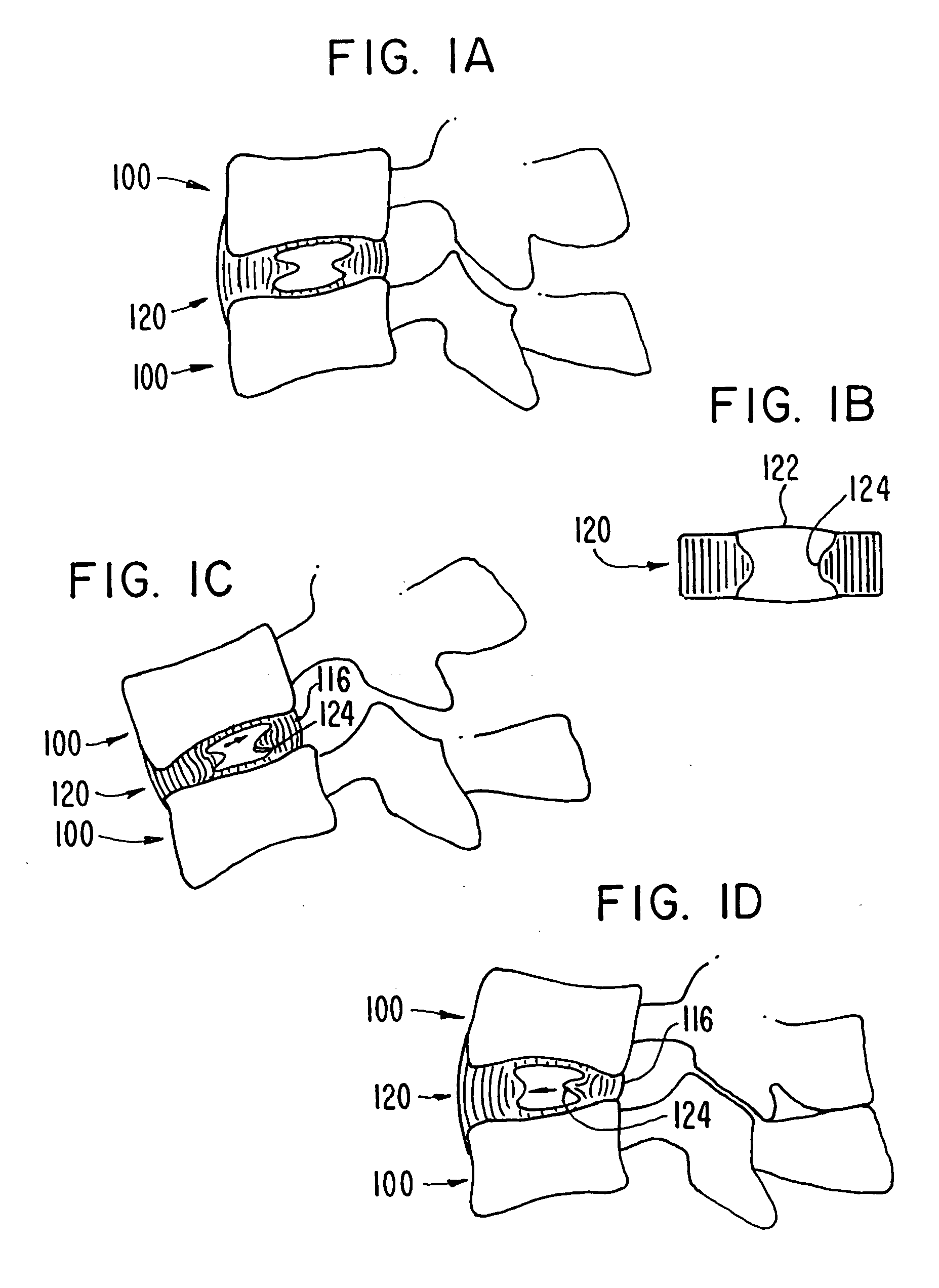Intervertebral disk and nucleus prosthesis
a technology of intervertebral disks and prostheses, which is applied in the field of human spine prosthesis replacement structures, can solve the problems of disc prosthesis through the endplate into vertebral bone, accelerated degeneration of spinal motion segments, and subsidence of bone grafts, etc., and achieves the effect of reducing the risk of disc deformation and further destabilizing the dis
- Summary
- Abstract
- Description
- Claims
- Application Information
AI Technical Summary
Benefits of technology
Problems solved by technology
Method used
Image
Examples
Embodiment Construction
[0082] The invention includes a prosthesis for replacing the nucleus pulposus of a human intervertebral disk and a prosthesis for replacing an entire intervertebral disk.
[0083]FIGS. 1A-1D schematically illustrate the natural human intervertebral disk 120, in cross-section, positioned between two vertebrae 100. FIG. 1A shows the configuration of the intervertebral disk 120 when the vertebral column of the spine is in a neutral position. FIG. 1B is a somewhat enlarged cross-section of the intervertebral disk 120, showing the natural nucleus pulposus 122 surrounded by the natural annulus fibrosus 116. The hourglass shape of the natural nucleus pulposus 122 produced by the inwardly bulging inner wall 124 of the natural annulus fibrosus can be seen. FIG. 1C shows the configuration of the intervertebral disk when the spine is in flexion compressing the anterior edge of the annulus fibrosus 116, causing the internal wall 124 to bulge inward, and the posterior edge of the annulus fibrosus ...
PUM
| Property | Measurement | Unit |
|---|---|---|
| Fraction | aaaaa | aaaaa |
| Fraction | aaaaa | aaaaa |
| Fraction | aaaaa | aaaaa |
Abstract
Description
Claims
Application Information
 Login to View More
Login to View More - R&D
- Intellectual Property
- Life Sciences
- Materials
- Tech Scout
- Unparalleled Data Quality
- Higher Quality Content
- 60% Fewer Hallucinations
Browse by: Latest US Patents, China's latest patents, Technical Efficacy Thesaurus, Application Domain, Technology Topic, Popular Technical Reports.
© 2025 PatSnap. All rights reserved.Legal|Privacy policy|Modern Slavery Act Transparency Statement|Sitemap|About US| Contact US: help@patsnap.com



